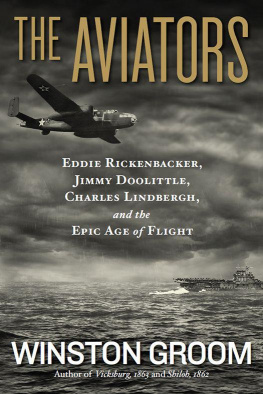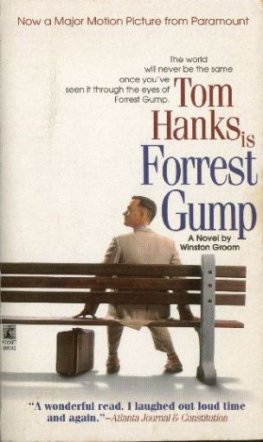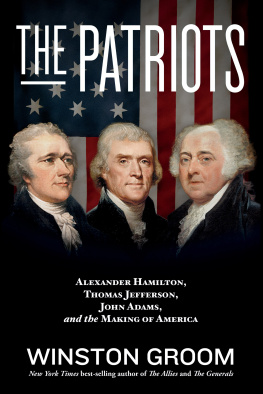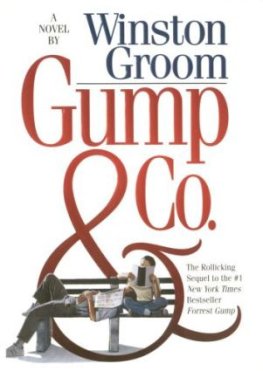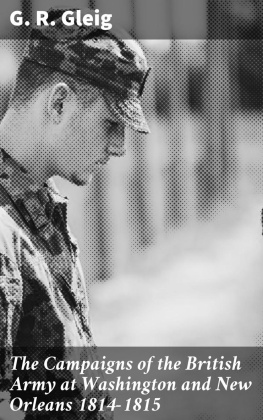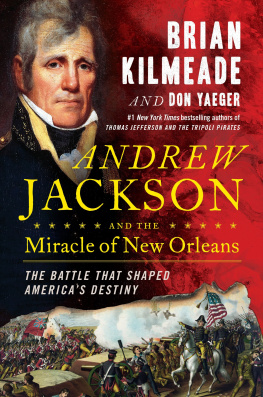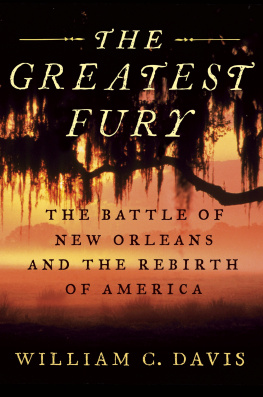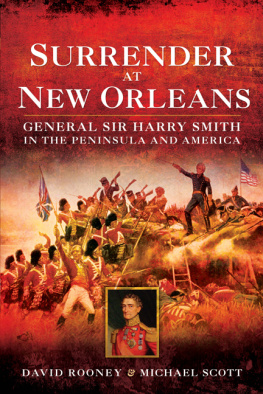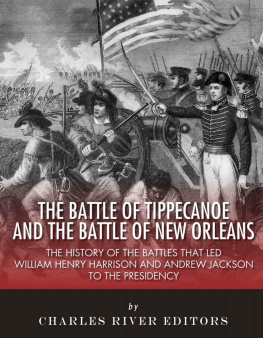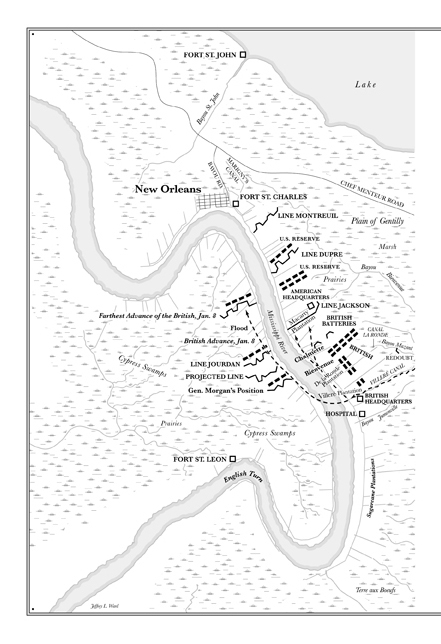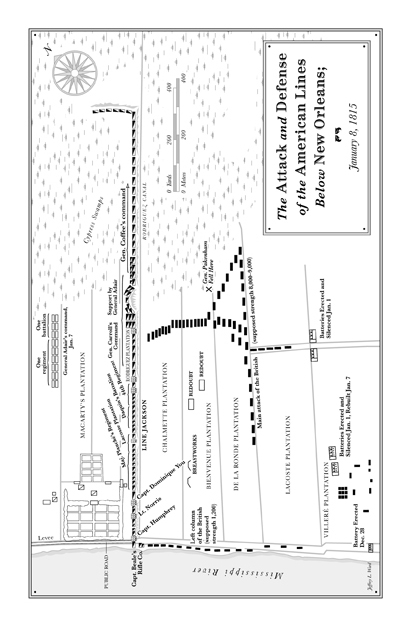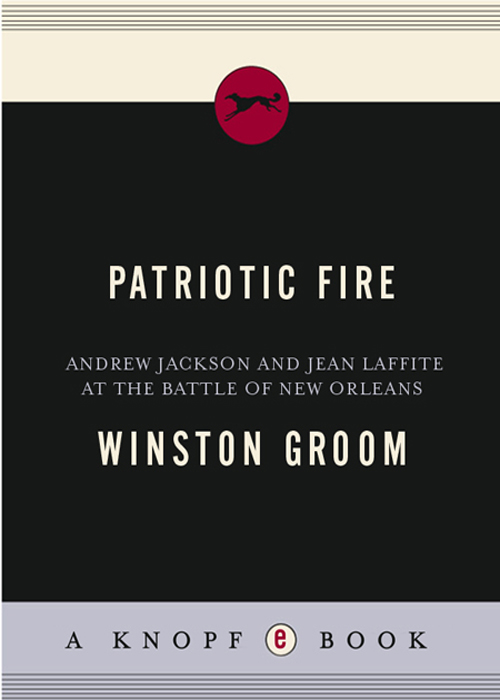
Patriotic Fire
Andrew Jackson and Jean Laffite at the Battle of New Orleans
Winston Groom

Alfred A. Knopf, New York, 2006
Contents
To Carolina Montgomery Groomage seven
When you would come into my office and ask what I was writing, I told you it was a story about pirates and Indians and generals and heroes, and one of your own ancestors from long agoall in your favorite city (the one with the big zoo). Well, here it is.
Your loving papa
Authors Note
A t the same time this book was going to press, the destructive hurricane Katrina struck the New Orleans area. Among the most devastated parts of the city was St. Bernard Parish, where the Battle of New Orleans was fought. The battlefield itself, now a national historical site maintained and operated by the National Park Service, was, at the end of September 2005, under several feet of water. The historical papers, paintings, maps, and other original documents are apparently saved, having been moved before the storm to other parts of the state from the Historic New Orleans Collection, the Williams Research Center, the Louisiana State Museum, and other archival entities.
Introduction
M ost gratifying for any writer of histories is being able somehow to connect yourself to the events youre describing; it adds an extra impetusthe almost bone-shivering feeling that you might actually be a small part of it, a slender thread that binds. I remember how whenever the historian Steve Ambrose, a friend who lived not far from here, began a new project he would first of all collect every relic he could find from the era he was writing about and clutter his office with them, just to keep himself in the spirit. And when that book was finished hed then clear them out and start all over again, getting up a new collection to suit his next topic.
The last time I saw him do this was when he was writing Nothing Like It in the World, about the construction of the American transcontinental railroad, completed in 1869. Steve had somehow acquired an old topographical tableau under glass, about six or eight feet long and taking up the whole center of his office, that laid out in bas-relief the entire Western United States from Omaha, Nebraska, to Sacramento, California, with mountains, rivers, plains, deserts, and so forth, and model tracks and trains with little tin men working on them, like those collections of toy soldiers children used to play with after World War I.
Ive been lucky enough to have experienced this sensation myself, mostly through direct ancestral involvement, although my people have not by and large been professional soldiers. In Shrouds of Glory: From Atlanta to Nashville: The Last Great Campaign of the Civil War (1995), it was through my great-grandfather Fremont Sterling Thrower, who left college in 1862 to serve with the cavalry of the Confederate general Joseph Fighting Joe Wheeler.
In A Storm in Flanders: The Ypres Salient, 19141918: Tragedy and Triumph on the Western Front (2002), inspiration was drawn through my grandfather, who fought in France with an American infantry division, and who, after a few years and another visit to France, brought back a Michelin Company illustrated guidebook of those terrible battlefields, a book that impressed itself into my memory when I was a teenager.
In 1942: The Year That Tried Mens Souls (2005), my fathers service as a U.S. Army officer during World War II led to an even closer connection. Id heard for much of my life his stories, and those of his friends, around the dinner table, stories of Before the war... , During the war... , and After the war...
Now here, to my surprise and delight, in this book on the dramatic and decisive end of the War of 1812, yet another ancestor has given me stimulus to recount the heroic events that occurred so long ago and far away. His name was Major Elijah Montgomery, of General Andrew Jacksons army at the critical Battle of New Orleans in late 1814 and early 1815, which forever crushed Englands notion of reclaiming her dominant presence on American soil.
The source for these ancestral characters has been gleaned primarily from sheaves of old papers, letters, and other documents recovered nearly a quarter century ago in the attic of my parents home. My family, all of them, were inveterate collectors, pack rats if you will, and over the generations a wealth of such information had been handed down. None of them, I imagine, had any real idea of what to do with it all, just that it oughtnt to be thrown away. Thus it was meticulously kept and stored in small packets tied with pink or blue ribbons, a quaint custom of the day, it seems, and saved in small metal strongboxes or wooden boxes. All of it at some point finally wound up in my parents attic and, after their deaths, made its way into my own cabinets.
M ajor Elijah Montgomery was my great-great-great-grandfather, on my fathers side of the family. He was born on the Northern Neck of Virginia (near Yorktown) in 1777 and died on his plantation near Mobile, Alabama, in 1831, at the age of fifty-four. I had heard my grandmother speak of him, although he had died well before she was born in the 1880s, but shed listened as a young woman when her own grandmotherElijahs daughtertold her stories about him. As a young boy I heard some of my grandmothers tales repeated: that Elijah was an officer in the War of 1812; that he had accumulated substantial holdings; that he died leaving two young daughters who were swindled out of their fortune by an unconscionable guardian appointed by the courts; and so on. Its a shame, though, in retrospect, that I didnt listen more closely as a youngster.
After I decided to write this book, I returned to the old papers to see just who and what Elijah Montgomery had been and what he had done, on an outside hunch that he might have had some role in the Battle of New Orleans. Little did I know! Many of the documents are crumbling; those particular papers are now nearly two hundred years old and a few will break up in your fingersliving history half vanished in an instant. But as I carefully untied the bits of ribbon and string around the packets and laid out their contents on a table in my office, a life began to reassemble itselfthe life of a soldier, a war hero, a Southern planter and fathera man born during the American Revolution who lived in the strange and distant times of ferocious Indians, of slavery and duels, of wars with Englishmen and the birth of a new nation among deep forests reminiscent of Coopers
Next page

